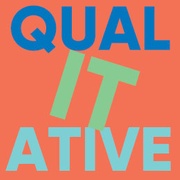Qualitative Research: Helping to Move Health Equity Forward
By ETR's Qualitative Evaluation Sub-Core Group | May 16, 2019
Advancing health equity is one of ETR’s core values. We are part of a movement to improve health and education outcomes for all communities. Qualitative research—the kind that asks questions, gathers stories and provides rich contextual information—is a valuable tool in this work.
Qualitative research helps us better understand how communities see themselves, their future, their history, and the ways they change over time. It gives us information about structural and social influences and how these affect individuals, neighborhoods and society at large. This is essential knowledge as we engage in efforts to address inequities.
In contrast, quantitative research looks at issues by gathering and systematically analyzing numerical data to explore a phenomena and its prevalence in communities.
Both qualitative and quantitative knowledge contribute unique and essential knowledge as we engage in efforts to address inequities. ETR researchers believe mixed-method research (that is, combining qualitative and quantitative methods) is a powerful way to obtain more accurate understanding of phenomena from multiple perspectives.
In this post, we’ll explore what qualitative research is, look at some of its distinctive features, and consider how these are useful in the movement to advance health equity.
What Is Qualitative Research?
Qualitative research refers to research based on data from words and images. It explores how and why a certain phenomenon occurs. It deepens understanding of people’s experiences and describes concepts, rather than counts or measures. These data can come from:
- Interviews (one-on-one, focus groups)
- Notes of observations
- Case studies
- Video, audio, images
- Textual documents (written answers to survey questions, diaries, journals, logs, web pages)
Bringing Data to Life
Perhaps the most powerful feature of qualitative research is that it brings life to data. Numbers and statistics can tell us some of the “what, who and how,” but it takes stories and other narrative formats to illuminate the “why.” Qualitative research can also enrich our understanding of the “who and how.” It helps answer the question, “What is happening here?” about interesting phenomena occurring in the world.
As humans, we are drawn to stories by our very nature. We listen. We remember. We tell others. So qualitative work can give us stories to help us interpret, remember and share data.
 Qualitative research approaches also capture the direct voice of participants—something quantitative methods cannot do. They allow us to investigate what meaning participants are making of their real-world contexts. Listening to research subjects is an ethically sound practice, and it brings forth vital insights to keep us grounded in reality. This can help researchers think more deeply about their work and how it applies to lived experience.
Qualitative research approaches also capture the direct voice of participants—something quantitative methods cannot do. They allow us to investigate what meaning participants are making of their real-world contexts. Listening to research subjects is an ethically sound practice, and it brings forth vital insights to keep us grounded in reality. This can help researchers think more deeply about their work and how it applies to lived experience.
Researchers might identify gaps in their proposal or discover unexpected issues. They might see new directions for the interpretation of quantitative results. Greater awareness of the lived experiences of participants can influence the ways researchers think about variables in their studies and the impact they are likely to have on participants. It can help them reflect on the impact they wish to have and incorporate the needs and desires of the participants.
Categories of Qualitative Data Analysis
When applied properly, qualitative data analysis is rigorous. Generally speaking, it can be divided into five categories.
- Content analysis. Verbal or behavioral data is categorized so it can be classified, summarized and tabulated.
- Narrative analysis. Researchers analyze stories from respondents by asking specific questions of the narrative text itself to explore more about the “how” and “why” of the study topic (e.g., What was this about? Who was involved, when and where? What happened? What was the outcome?)
- Discourse analysis. Language is analyzed in both texts and conversations. This approach examines contexts, such as social and cultural frameworks, nonverbal cues, body language, images and symbols. It also explores the interaction between speaker and listener (or a text and a reader).
- Framework analysis. This is a more advanced method that involves several specific steps. It allows researchers to identify thematic frameworks and assess the effects of policies and practices on populations.
- Grounded theory. Researchers start with a single case and analyze it to formulate a theory or proposition. Additional examples are then analyzed and the theory is reformulated, tested and evolved as new data continues to be gathered.
A Primary Paradigm
Many researchers bring qualitative strategies into the formative segment of a project. “Before we lock in our protocol,” they say, “let’s do a focus group or run some interviews.” This is a good use of the form—qualitative data can help clarify a direction or approach.
But it isn’t just an “add on.” Qualitative research can be a primary paradigm in the way we design and carry out our projects. It can be used as an essential pathway into an ongoing, iterative process.
Researchers are always discovering something new from their data sets. Something unexpected or confounding emerges. The answer to this is not to run another survey. It’s to talk to people!
An Example from Ifeoma Udoh: Spikes in Clinic Visits
 I was working on a research project through a medical clinic serving young, urban men who had sex with other men. The study examined their attitudes about pre-exposure prophylaxis for HIV (PrEP), and tracked uptake and adherence. We saw some variation in clinic attendance seasonally, which we expected—more subjects came into the clinic during winter months when colds and flus were common. But we were puzzled by a spike in visits in May and June.
I was working on a research project through a medical clinic serving young, urban men who had sex with other men. The study examined their attitudes about pre-exposure prophylaxis for HIV (PrEP), and tracked uptake and adherence. We saw some variation in clinic attendance seasonally, which we expected—more subjects came into the clinic during winter months when colds and flus were common. But we were puzzled by a spike in visits in May and June.
Even though it wasn’t part of the original study design, we invited some participants in for interviews and gathered more qualitative data. The interviews gave us our answer—“Everybody’s getting ready for Gay Pride!”
With this information, the clinic recognized a greater need to plan ahead for June’s Gay Pride events. They increased their springtime messaging about the benefits of PrEP—posters, pamphlets and emails. They fortified their staff so everyone was ready to have conversations about PrEP with clients. The research group began to dig deeper into guidelines about intermittent use of PrEP, which was a new idea at the time (e.g., that an individual could take PrEP “on demand,” scheduled around a vacation or other event—see guidelines here).
An Example from Louise Ann Lyon: Women Volunteering to Help Each Other Learn to Code
 Here’s an example from my work where we investigated a phenomenon arising organically in the world. We looked at women volunteering to help each other learn to code.
Here’s an example from my work where we investigated a phenomenon arising organically in the world. We looked at women volunteering to help each other learn to code.
I noticed that in my town there were “meetups” created for women to work on web design and development projects. I thought it was interesting that these women were motivated to volunteer to help each other and spend energy creating such groups.
I ended up conducting a study of one such group. We found that women felt more comfortable asking questions in an all-women’s group and that they received unsolicited verbal support from other women in these groups. Some, but not all, of the women also felt strongly that it was important to create such groups in order to make workplaces that have traditionally been dominated by men more equitable. These women believed that helping more women learn to code would mean that more women would move into jobs requiring that skill, thereby increasing the number of women vs. men in the workplace.
Let’s Build This Work into Our Projects
When we design a study, we are creating a road map of where we want to go. But when we bring in the iterative potential of qualitative research, we can actually re-engineer the road as we go along. We can shift our strategies in response to the ever-changing factors affecting health equity—federal laws, state policies, local events, social media trends. We can observe changes in behavior and beliefs as they’re actually occurring and adapt our plans in response.
This means we can also engage more authentically in building healthier communities. Qualitative research gives us an opportunity to talk to people, listen to their stories and synthesize information. We can integrate their wisdom and experience across the entire span of the work we’re doing.
This is an important framework not only for researchers in planning and implementation, but also for funders as they consider proposals. Qualitative research demands time and resources for data gathering and analysis. We can draw more meaningful conclusions when we employ qualitative methods throughout the course of a study.
The Qualitative Evaluation Sub Core Group at ETR is comprised of researchers who have a particular interest in qualitative approaches. They support greater incorporation of qualitative research in all of our projects. Members of the group include Ifeoma Udoh, Emily Green, BA Laris, Louise Ann Lyon, Lindsay Winters and Pam Drake. Thanks to Sue Potter for review comments on this post.
You can read about some of ETR’s qualitative research projects here, here and here.





